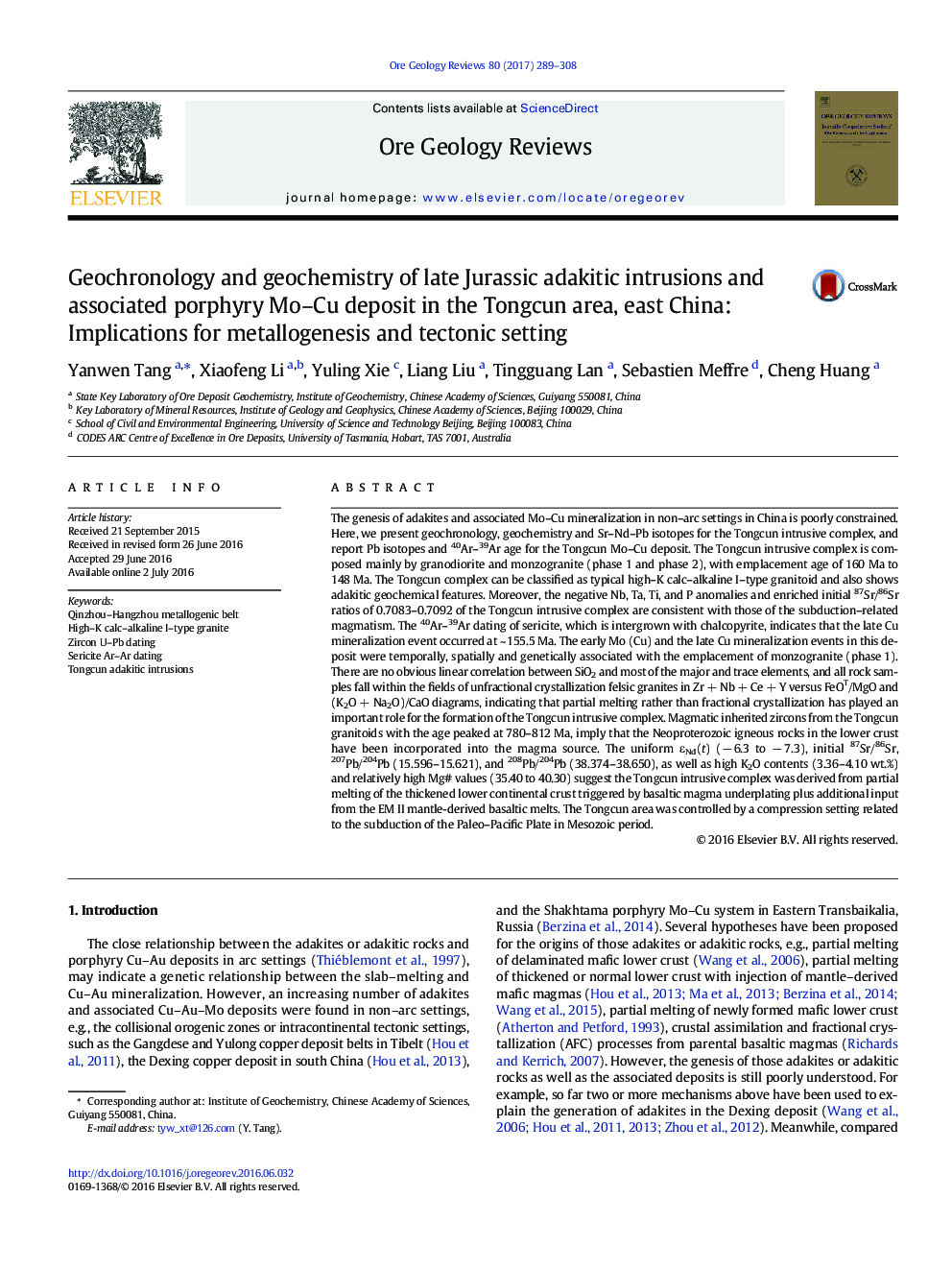| کد مقاله | کد نشریه | سال انتشار | مقاله انگلیسی | نسخه تمام متن |
|---|---|---|---|---|
| 6435607 | 1637226 | 2017 | 20 صفحه PDF | دانلود رایگان |

- Petrogenesis of the Tongcun adakitic intrusive complex in non-arc settings was discussed.
- New age for late Cu mineralization and Pb isotope of the Tongcun complex, molybdenite and chalcopyrite were analyzed.
- The genesis of the porphyry Mo-Cu deposit associated with the Tongcun adakitic complex was discussed.
- A new simplified genetic model is given for the formation of the Tongcun Middle-Late Jurassic I-type granites.
The genesis of adakites and associated Mo-Cu mineralization in non-arc settings in China is poorly constrained. Here, we present geochronology, geochemistry and Sr-Nd-Pb isotopes for the Tongcun intrusive complex, and report Pb isotopes and 40Ar-39Ar age for the Tongcun Mo-Cu deposit. The Tongcun intrusive complex is composed mainly by granodiorite and monzogranite (phase 1 and phase 2), with emplacement age of 160 Ma to 148 Ma. The Tongcun complex can be classified as typical high-K calc-alkaline I-type granitoid and also shows adakitic geochemical features. Moreover, the negative Nb, Ta, Ti, and P anomalies and enriched initial 87Sr/86Sr ratios of 0.7083-0.7092 of the Tongcun intrusive complex are consistent with those of the subduction-related magmatism. The 40Ar-39Ar dating of sericite, which is intergrown with chalcopyrite, indicates that the late Cu mineralization event occurred at ~ 155.5 Ma. The early Mo (Cu) and the late Cu mineralization events in this deposit were temporally, spatially and genetically associated with the emplacement of monzogranite (phase 1). There are no obvious linear correlation between SiO2 and most of the major and trace elements, and all rock samples fall within the fields of unfractional crystallization felsic granites in Zr + Nb + Ce + Y versus FeOT/MgO and (K2O + Na2O)/CaO diagrams, indicating that partial melting rather than fractional crystallization has played an important role for the formation of the Tongcun intrusive complex. Magmatic inherited zircons from the Tongcun granitoids with the age peaked at 780-812 Ma, imply that the Neoproterozoic igneous rocks in the lower crust have been incorporated into the magma source. The uniform εNd(t) (â 6.3 to â 7.3), initial 87Sr/86Sr, 207Pb/204Pb (15.596-15.621), and 208Pb/204Pb (38.374-38.650), as well as high K2O contents (3.36-4.10 wt.%) and relatively high Mg# values (35.40 to 40.30) suggest the Tongcun intrusive complex was derived from partial melting of the thickened lower continental crust triggered by basaltic magma underplating plus additional input from the EM II mantle-derived basaltic melts. The Tongcun area was controlled by a compression setting related to the subduction of the Paleo-Pacific Plate in Mesozoic period.
Journal: Ore Geology Reviews - Volume 80, January 2017, Pages 289-308